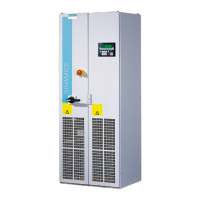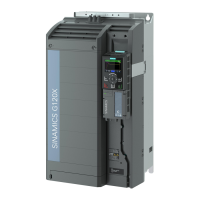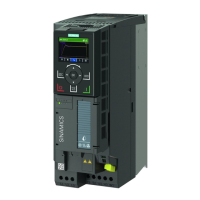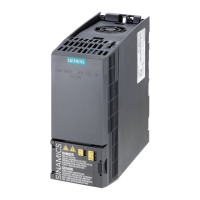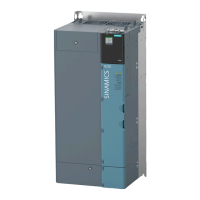Functions
8.7 Protection functions
SINAMICS G110M Operating Instructions
Operating Instructions, 04/2015, FW V4.7.3, A5E31298649B AD
207
.00 1 signal: Activate motor temperature model 1 (I2t) for permanently excited
.01 1 signal: Activate motor temperature model 2 for asynchronous motors
.02 1 signal: Activate motor temperature model 3 for 1FK7 encoderless synchro-
nous motors
p0612.02 cannot be set for every inverter.
.09 1 signal: Activate motor temperature model 2 expansions
p0614
Thermal resistance adaptation reduction factor
(factory setting: 30 %)
Derating factor for overtemperature of the thermal adaptation of the stator and rotor
p0615
Mot_temp_mod 1 (I2t) Interference threshold
(factory setting: 180 °C)
Interference threshold for monitoring the motor temperature in motortemperature
model 1.
After exceeding the interference threshold, the converter reports fault F07011.
p0621
Identification of stator resistance (Rs) when switched on again
(factory setting: 0)
The converter measures the current stator resistance and from this calculates the
current motor temperature as the start value of the thermal motor model.
Rs identification on first switching on the motor
Rs identification each time the motor is switched on
p0622
Motor excitation time for Rs_ident on switching on again
The converter sets the parameter value to the corresponding result of the motor data
p0625
Motor ambient temperature during commissioning
(factory setting: 20 °C)
Enter the ambient motor temperature in °C at the instant that the motor data is ac-
More information on temperature calculation can be found in function plans 8016 and 8017
and the list manual.
The vector control ensures that the motor current remains within the set torque limits.
If you use U/f control, you cannot set any torque limits. The U/f control prevents too high a
motor current by influencing the output frequency and the motor voltage (I-max controller).
I_max controller
Requirements
The torque of the motor must decrease at lower speeds, which is the case, for example, with
fans.
The load must not drive the motor continuously, e.g. when lowering hoisting gear.

